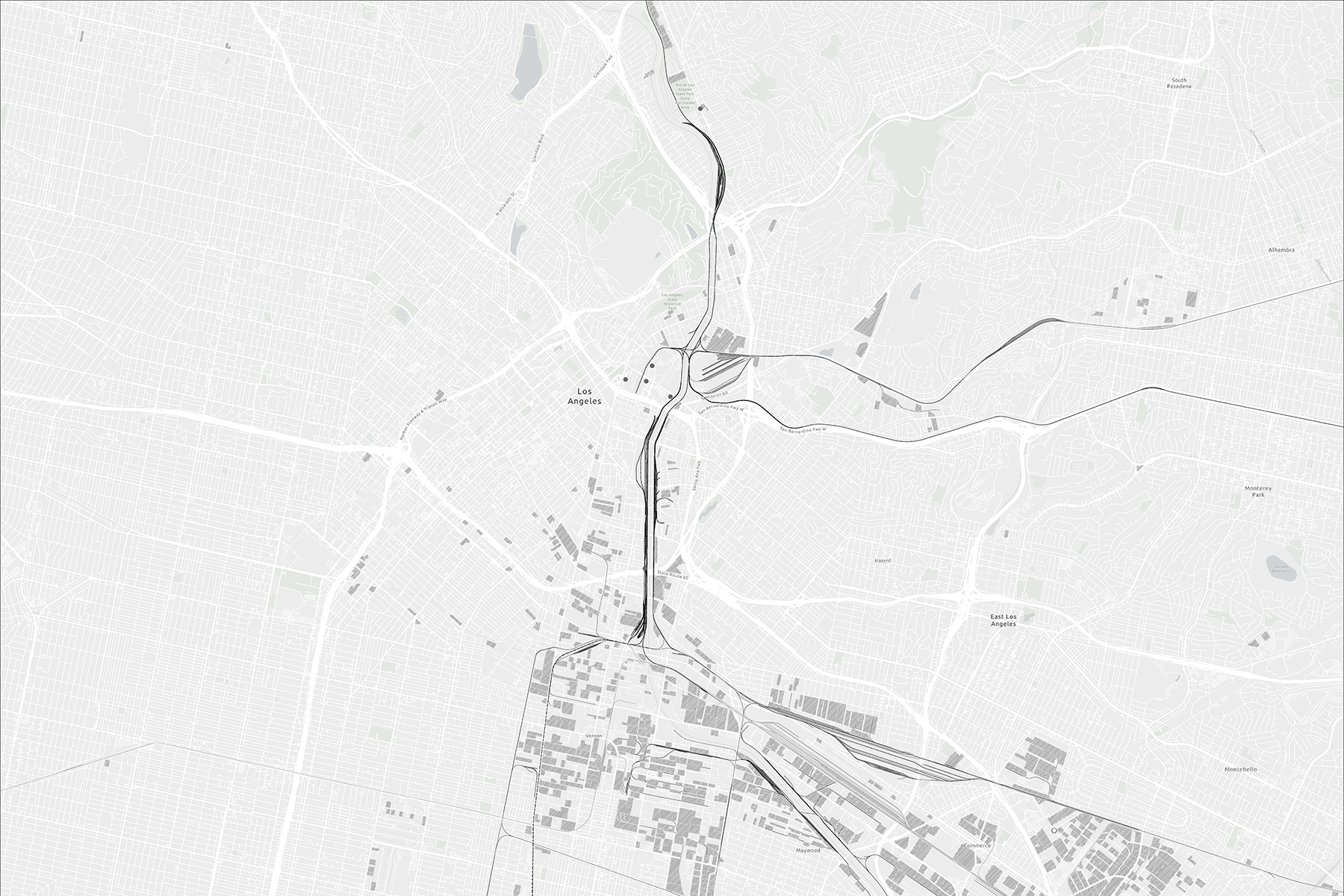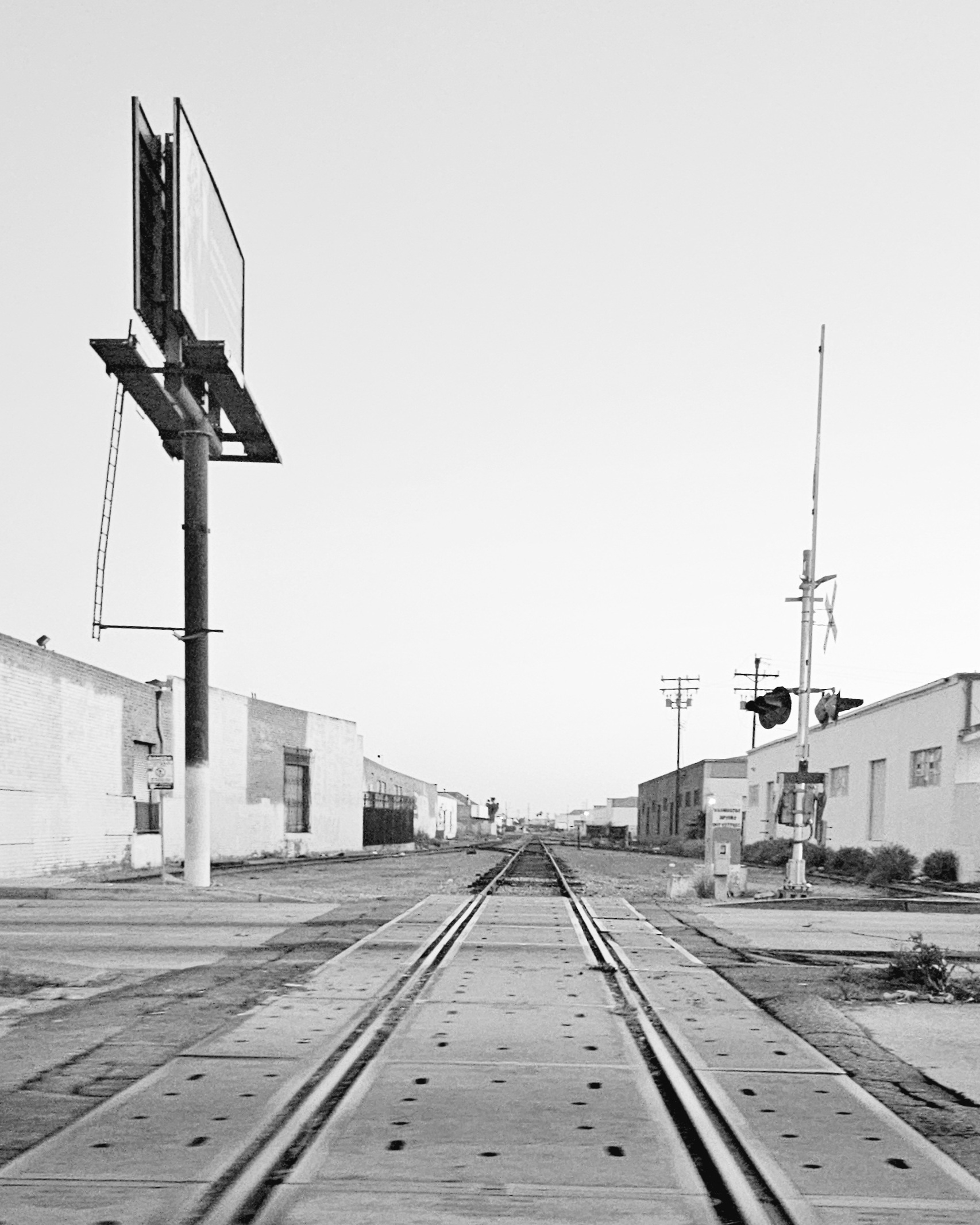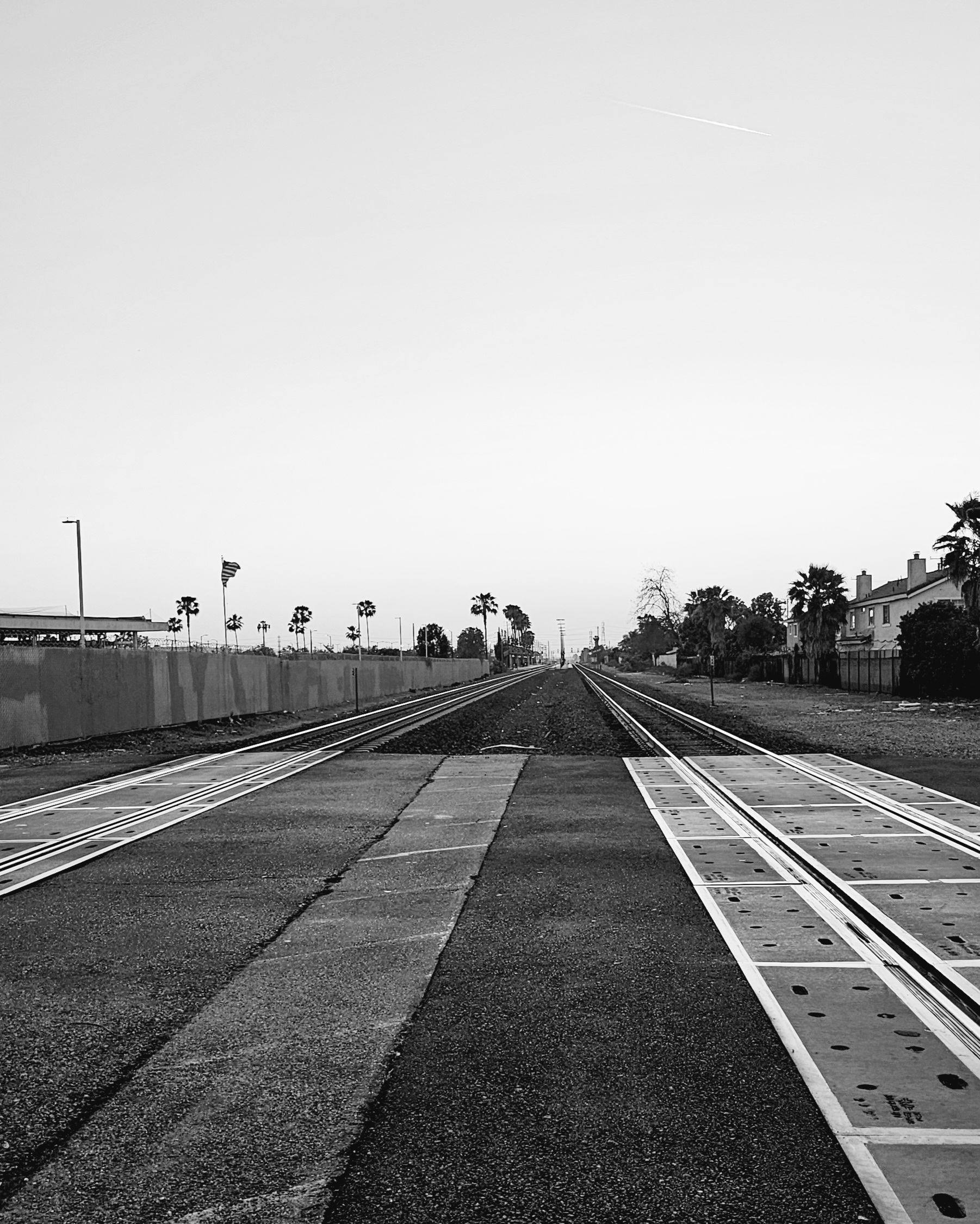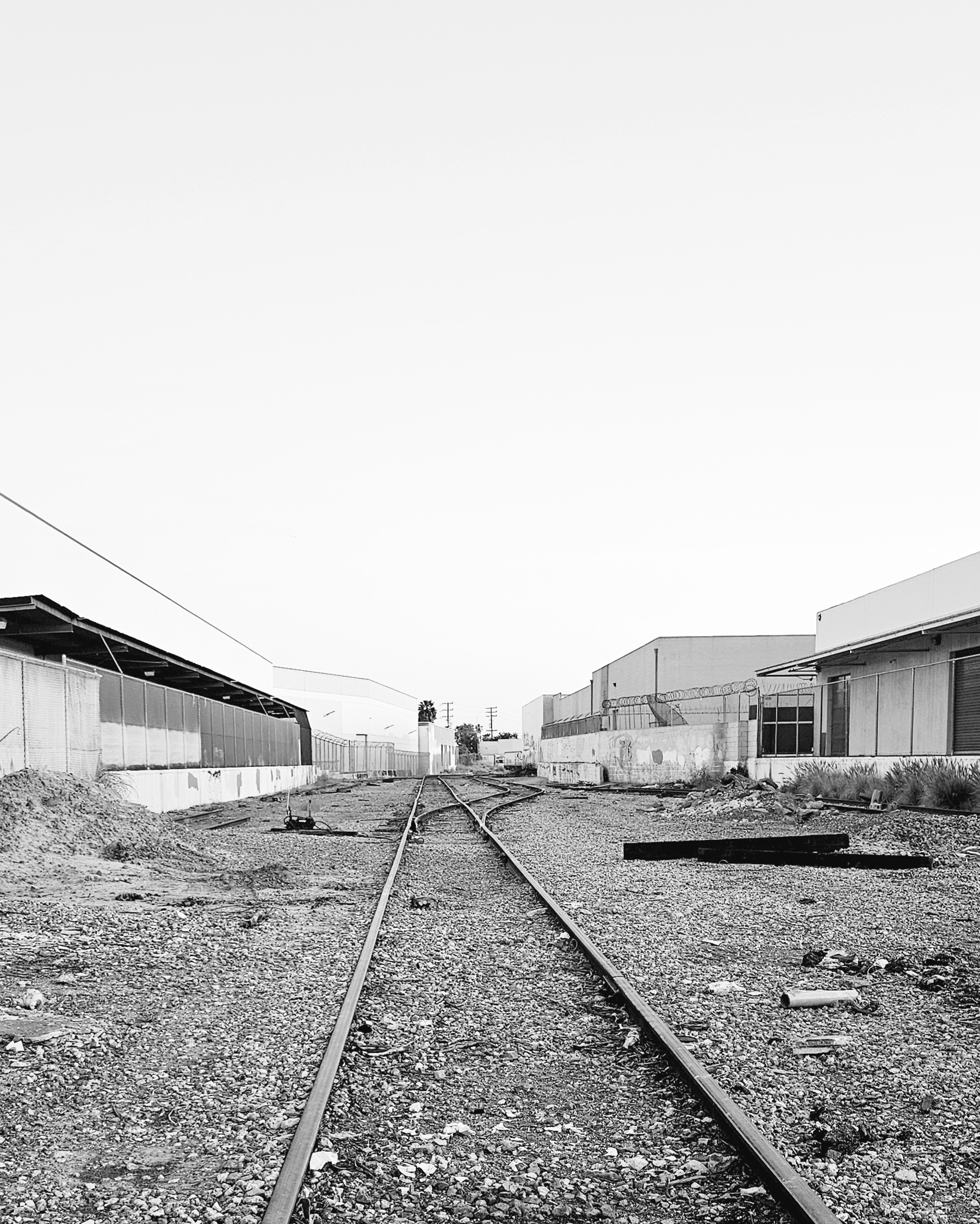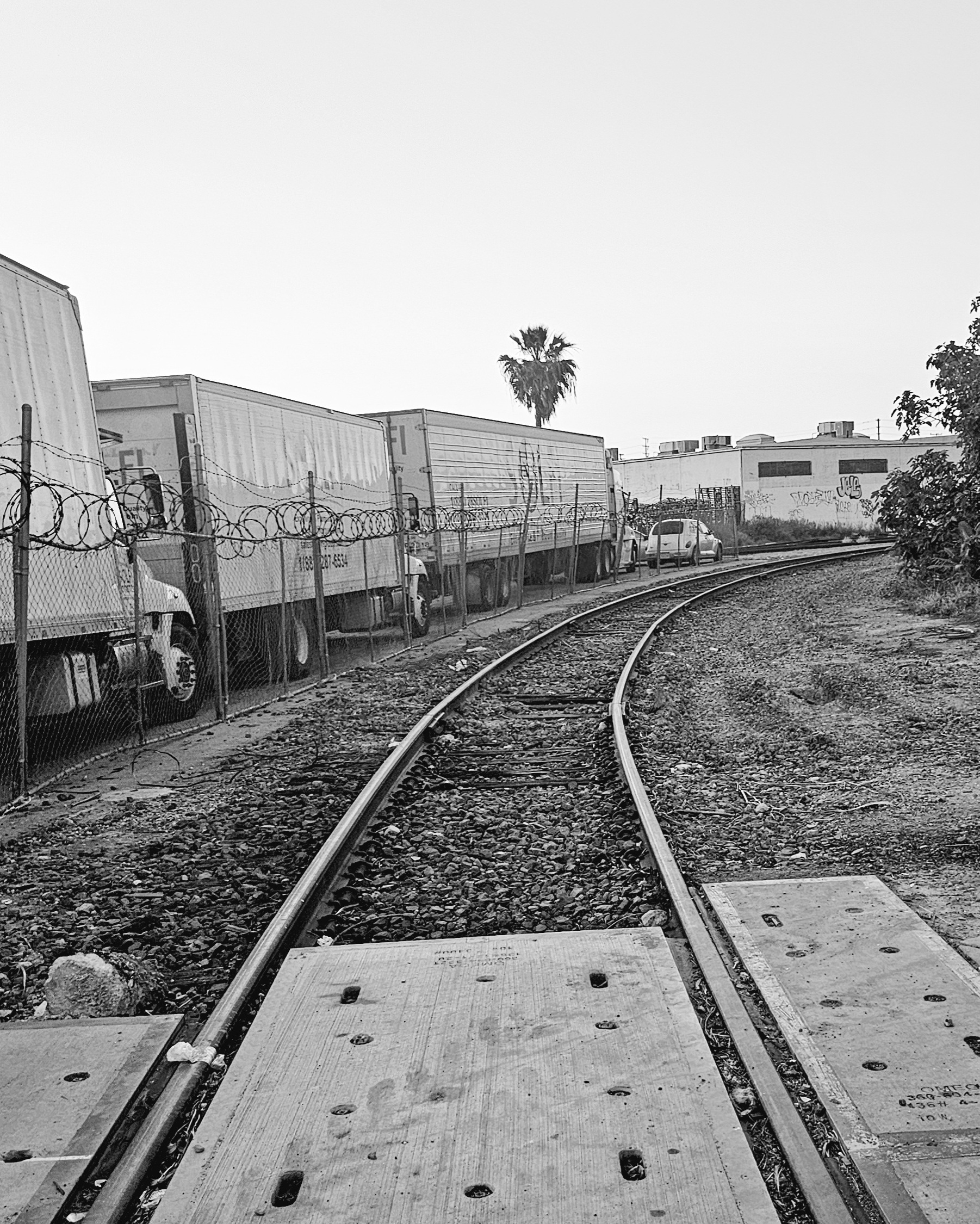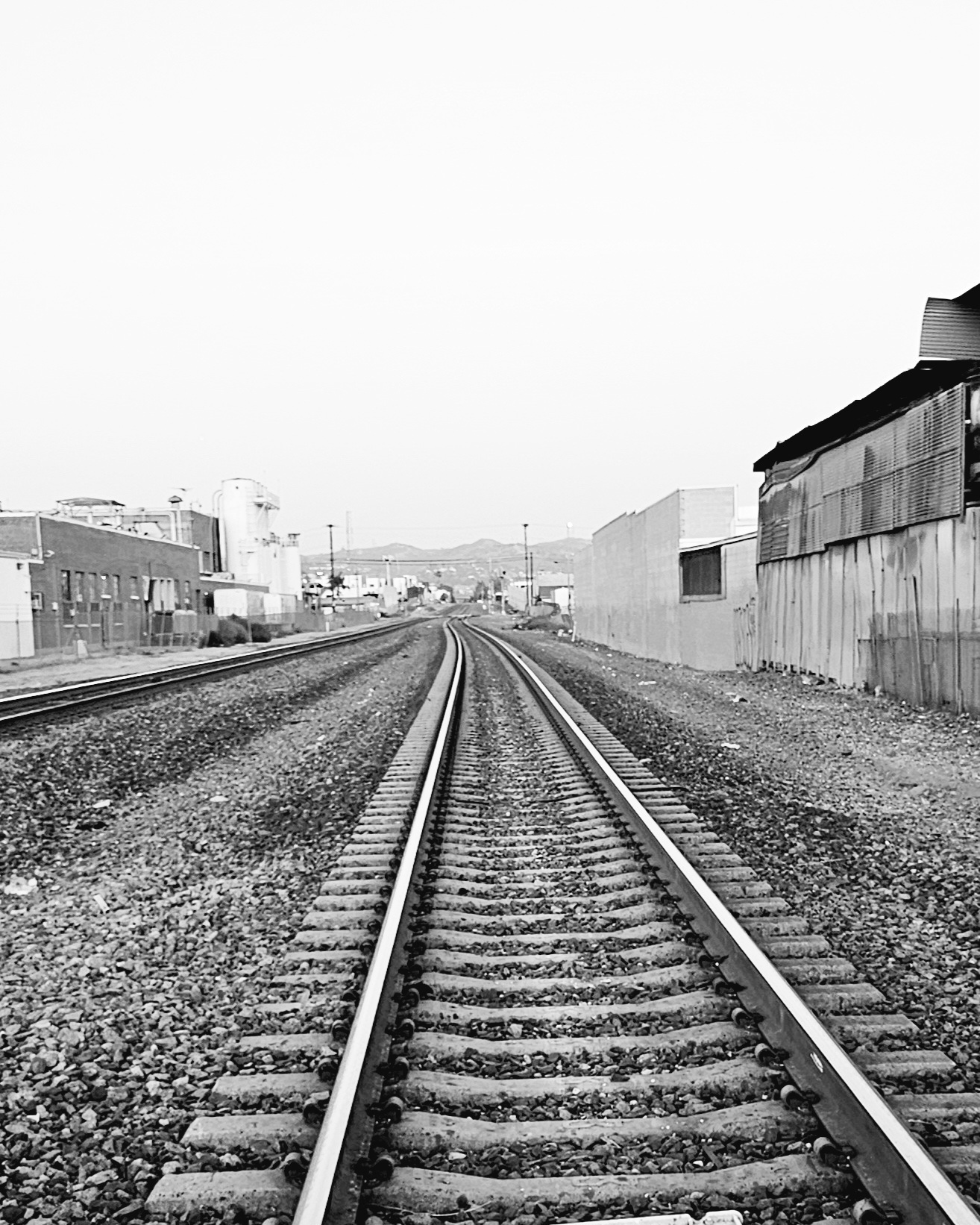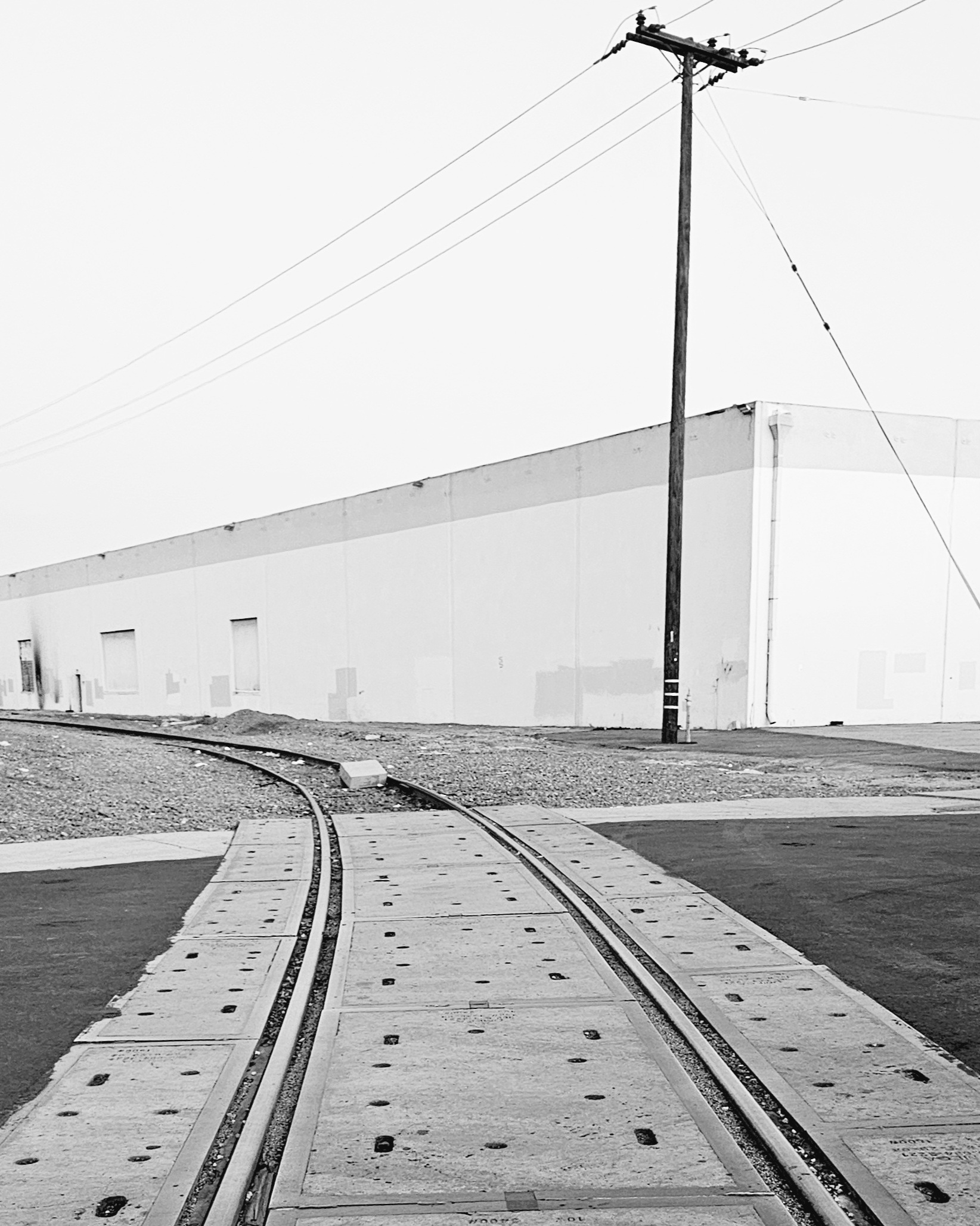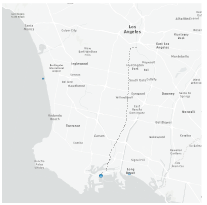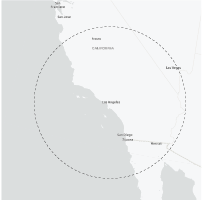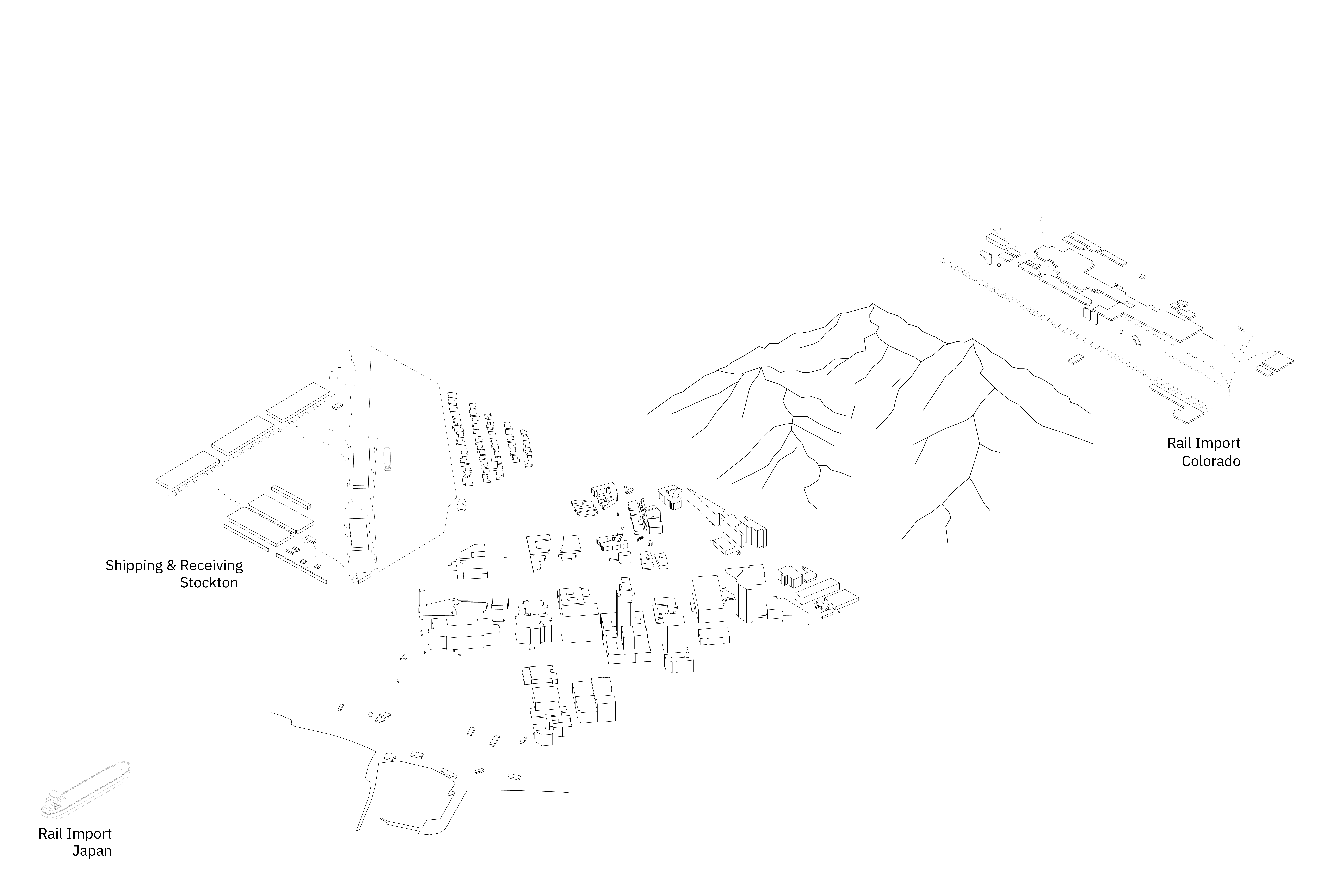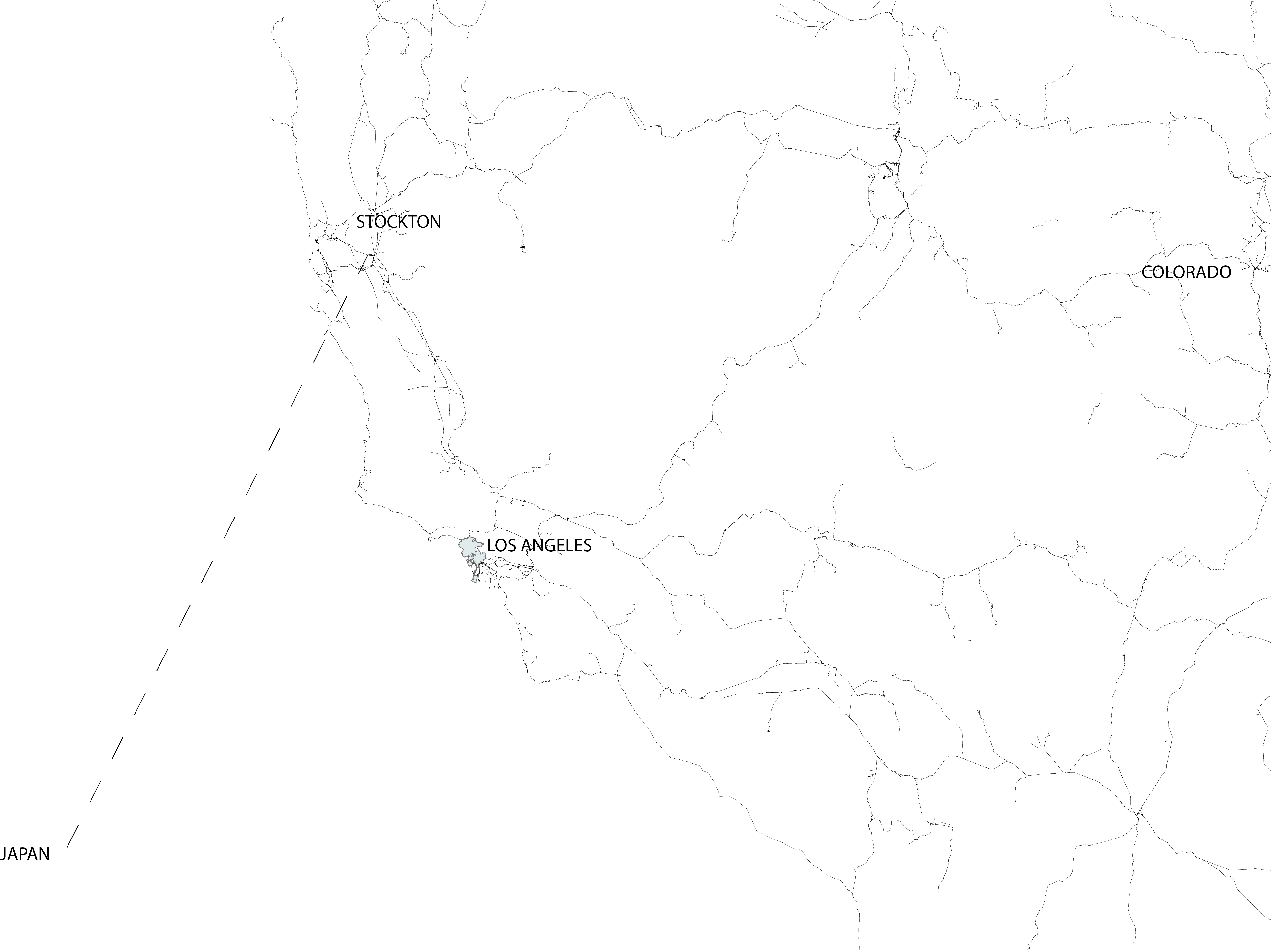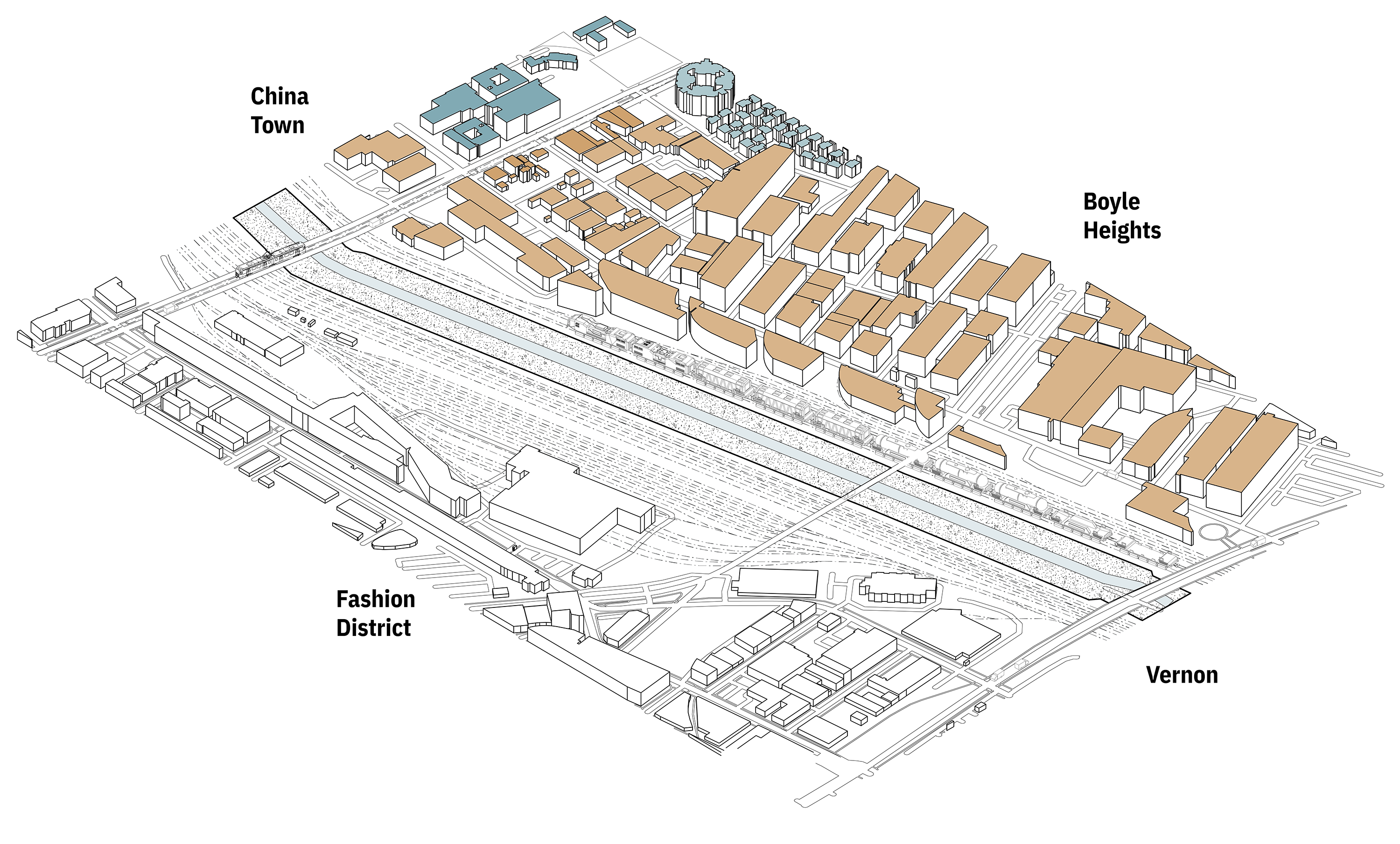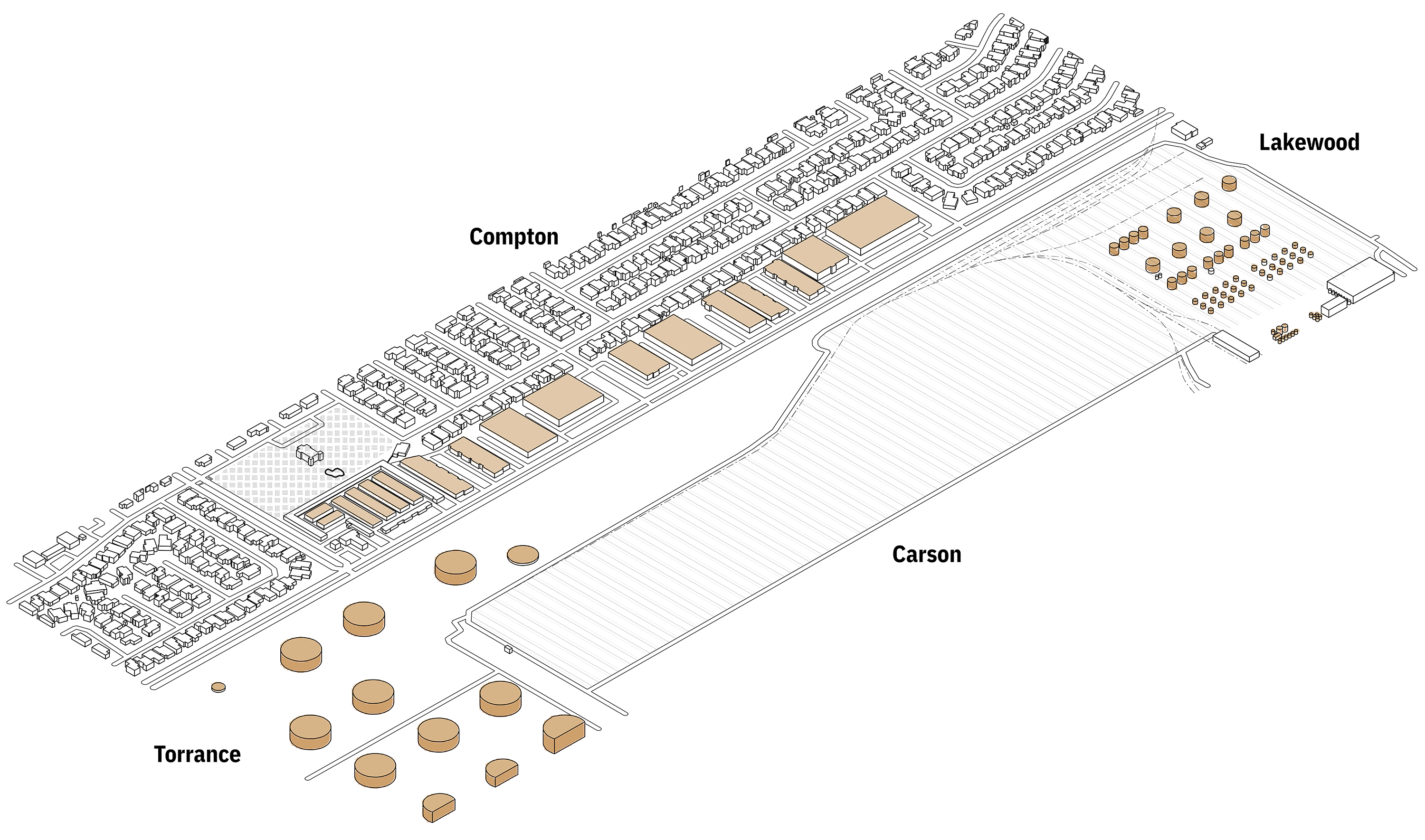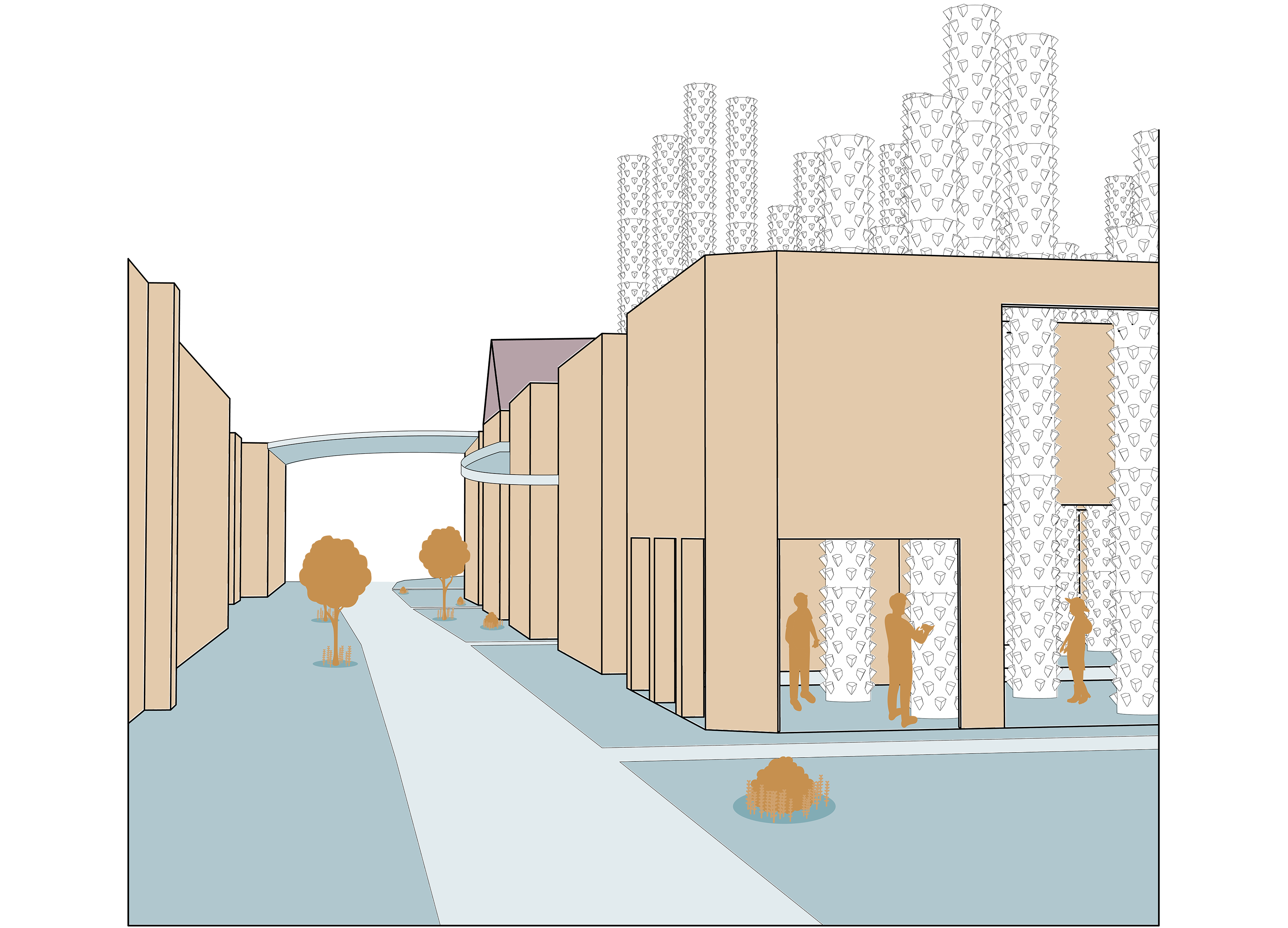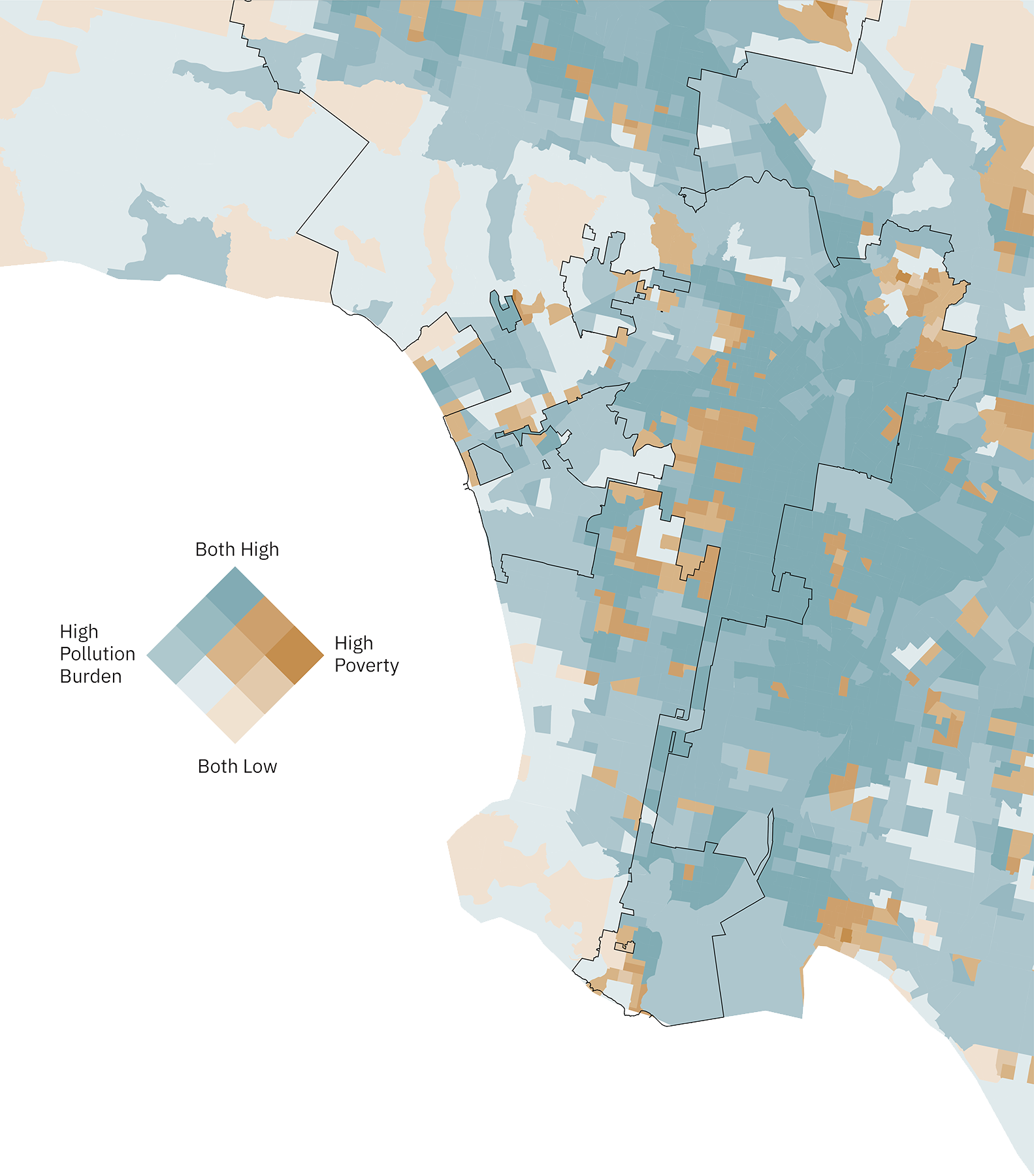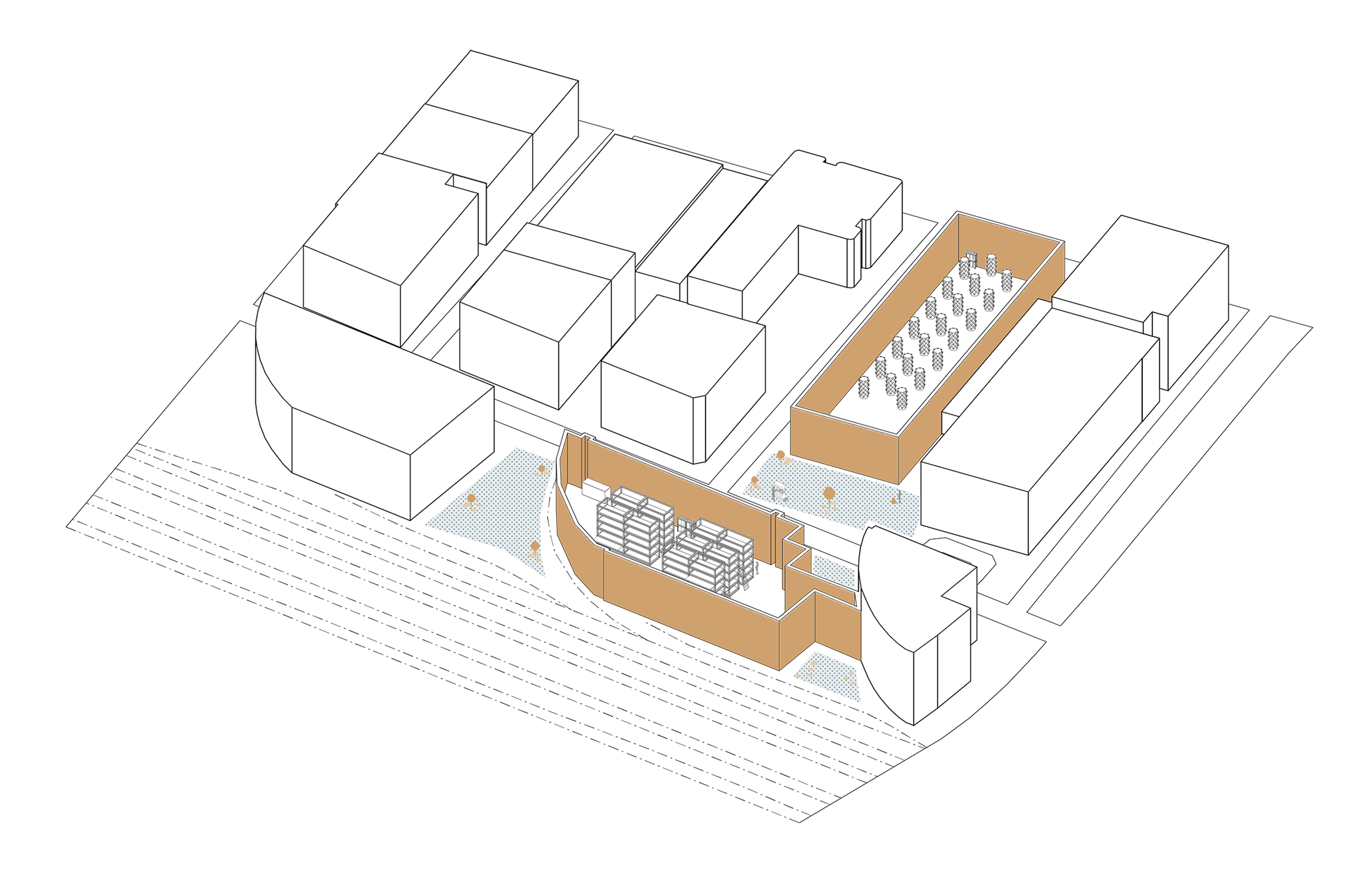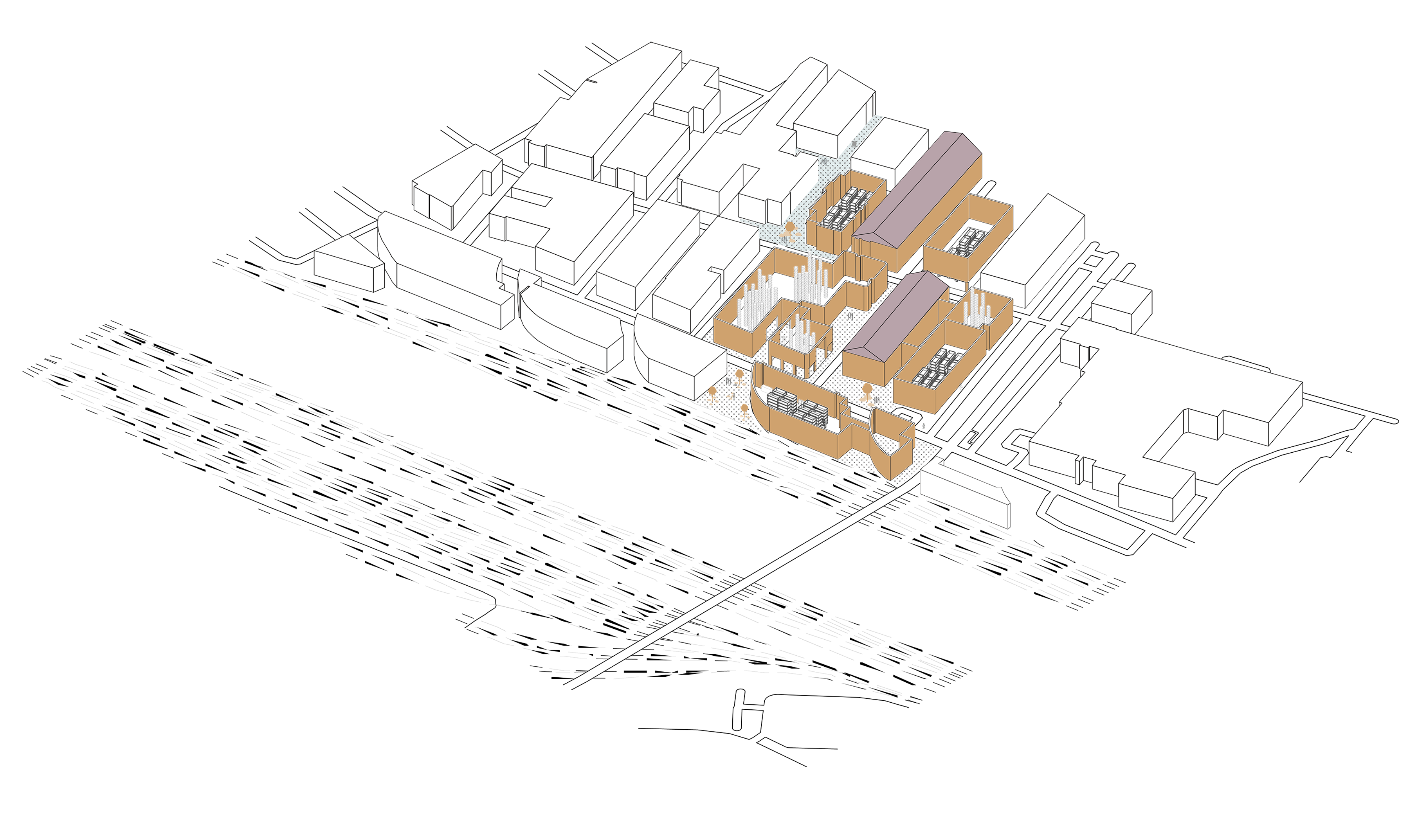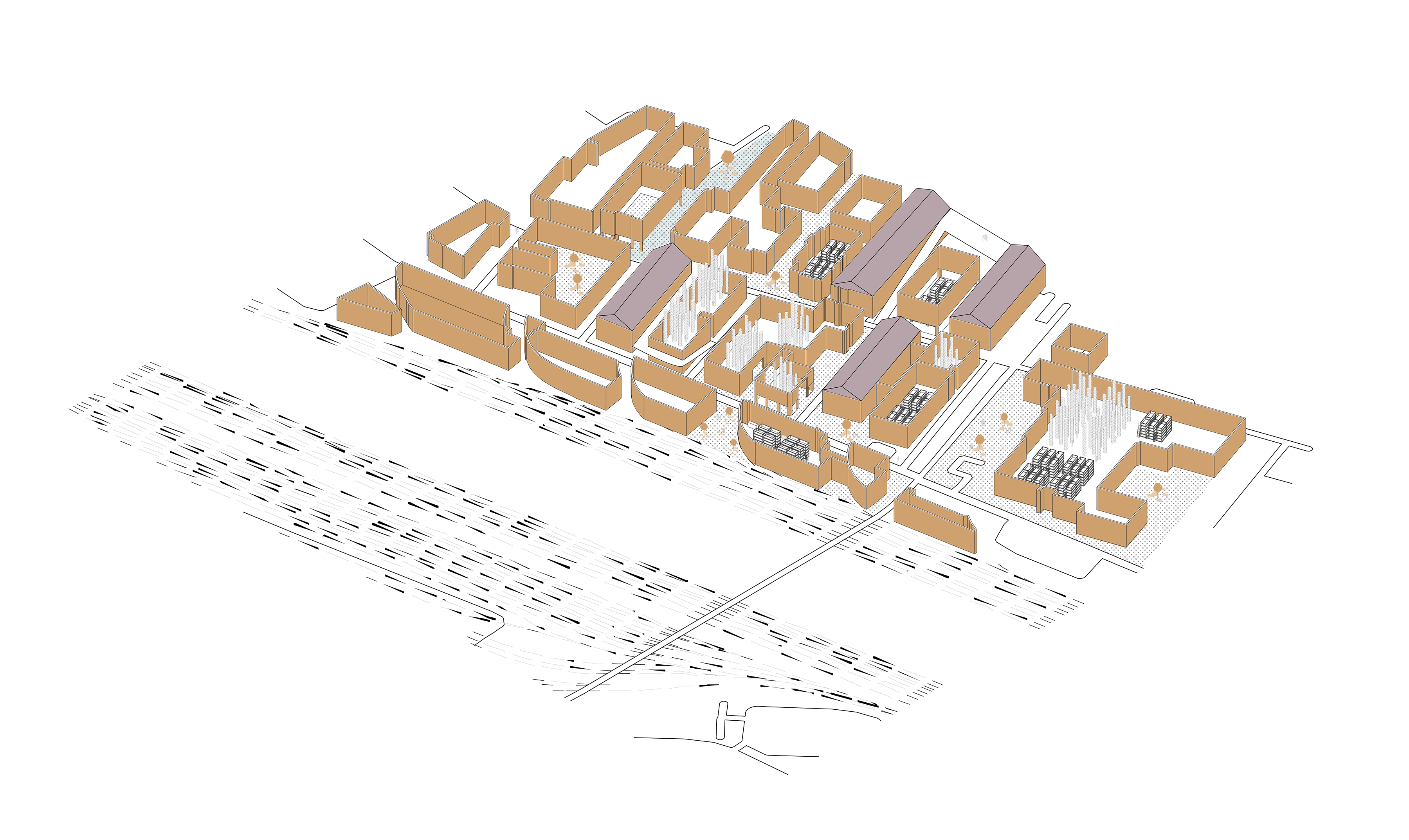Freight Rail & Warehouses
Although rail infrastructure often fades into the background of Los Angeles’ urban fabric, its development has come at a considerable ecological cost. To support this system, warehouses were constructed alongside expanding rail lines, and large-scale soil excavation was undertaken to accelerate the movement of freight from the ports into the city.
These proposals, then, are not about spending more money but spending it differently, and so directing it to communities and ecologies – in San Francisco and elsewhere – that remain most in need (de Monchaux, 15)
1869
LA & San Pedro Railroad opens
First port-to-city freight rail connection
1875
Acquired by Southern Pacific
Becomes San Pedro Branch
1881
Ports Advisory Committee studies
Recommends consolidated, upgraded rail access
1890
Refrigerated box car introduction
Agricultural industry boom[5]
1893
California Oil Boom
45 Barrles produced a day[9]
1909
Motion picture industry popularity
Production ramps up to meet year round demand[8]
1916
Mergence of warehouse districts near rail lines
Centralized storage, efficient rail access[6]
2002
Alameda Corridor opens
Grade-separated, high-capacity freight expressway
2020
Major on-dock rail expansions at LA/LB ports
Increased capacity, reduced truck traffic [7]
Violence, above all environmental violence, needs to be seen—and deeply considered—as a contest not only over space, or bodies, or labor, or resources, but also over time. We need to bear in mind Faulkner’s dictum that “the past is never dead. It’s not even past.” His words resonate with particular force across landscapes permeated by slow violence, landscapes of temporal overspill that elude rhetorical cleanup operations with their sanitary beginnings and endings (Nixon, 8)
WAREHOUSE
NETWORK
More than a billion square feet of warehouses and distribution centers cover Southern California. In the Inland Empire, 1 in 8 people are employed by Amazon.
Post-War housing tract developments displaced the agricultural industry.
Residents have experienced both economic change and environmental degradation.[1]
ALAMEDA CORRIDOR
POLLUTION
DISPLACED SOIL
CONTAMINATED SOIL
WAREHOUSE NETWORK
CONNECTED TO RAIL
Historically, re-rolled rail steel was used as re-bar in structural components, as regulations on re-bar were not established until the 1980’s. With this information, we establish that buildings built pre-1980 could have used re-rolled rail as re-bar(excluding residential).[12]
Nippon Steel of Japan and Sumitomo Metal Corporation provided Union Pacific with 480 foot long segments of rail [13]
Evraz Pueblo steel mill in Colorado reached an agreement with Union Pacific to produce 325 foot segments of rail. [14]
Martin Marietta is Union Pacific’s largest supplier of ballast, which is used to form the bed of railroad tracks with quarries in Irwindale[15]
BOYLE HEIGHTS
Boyle Heights is among the oldest cities in Los Angeles. It is also a heavily industrialized zone with over 11 acres of warehouses now with various uses. [16] [17]
Freight Rail & Warehouses Proposals
As of 2022, California dedicates approximately 24.2 million acres to agriculture. However, due to urban sprawl and environmental pressures, the state has lost an estimated 332,197 acres of agricultural land since 2017.[19]
Health Risk
Communities near rail yards such as Commerce face cancer risks up to 1,200 chances per million due to diesel particulate matter, far exceeding regional averages. Respiratory illnesses like asthma are 2x more prevalent in these areas compared to wealthier neighborhoods.[20]
Rail yards emit 22 tons of nitrogen oxides daily, contributing 9% of smog-forming pollution in the region. Diesel locomotives, responsible for 70% of rail yard emissions, idle near homes and schools, releasing carcinogenic soot.[21]
Affected Communities
Working-class Latino neighborhoods, such as Boyle Heights and Commerce, are disproportionately exposed. The 2007 Air Resources Board study found cancer risks 140% higher near Commerce rail yards, with schools and parks within pollution plumes.
Recent regulations, 2024’s Rule 2306, aim to cut nitrogen oxide emissions by 82% by 2037, but legal challenges and infrastructure delays threaten progress.[22]
Agricultural Shipping Impact
Agricultural products like Midwest grain and Central Valley produce are part of the cargo moved through LA’s rail yards, but pollution stems from diesel locomotives and trucks.[23]
PROPOSAL
VERTICAL LEGACY
Vertical Legacy: The Heirloom Project seeks to reduce Los Angeles residents’ reliance on imported goods by transforming existing warehouses into hyper-productive vertical farms. These farms will supply fresh, locally grown produce to nearby communities, reducing transportation emissions and enhancing food security.
To minimize the carbon footprint of construction, the original warehouse facades will be preserved, and salvaged materials will be re-purposed wherever possible. Portions of the warehouse space will be returned to the community, while sections of paved concrete floors will be removed to allow for the planting of native species. In areas where soil contamination is most severe, remediation strategies will be employed to mitigate environmental and health risks to surrounding neighborhoods.
15 YEARS
Large-scale warehouse conversions.
Major reduction in imported produce, LA begins exporting hydroponic crops.
AI-driven monitoring systems optimize growth.

Urban Development
This map shows the Surface Imperviousness of Los Angeles and more than 95% of the land area is covered by concrete or asphalt.
Sources
- Newton, Jim. 2023. “California Warehouse Boom Comes with Health, Environmental Costs for Inland Empire Residents.” CalMatters, January 26, 2023, sec. Commentary. https://calmatters.org/commentary/2023/01/inland-empire-california-warehouse-development/.
- Alameda Corridor Transportation Authority . 2025. “History – Who We Are – ACTA.” Alameda Corridor Transportation Authority. April 2, 2025. https://www.acta.org/about/history/.
- Freudenrich, Ph.D, Craig. 2001. “How Ozone Pollution Works.” HowStuffWorks. May 30, 2001. https://science.howstuffworks.com/environmental/green-science/ozone-pollution.htm.
- INTERNATIONAL STANDARD. 2020. “Series 1 Freight Containers – Classification, Dimensions and Ratings Conteneurs de La Série 1 -Classification, Dimensions et Masses Brutes.” Http://www.iso.org/. https://cdn.standards.iteh.ai/samples/76912/7354663676144f8ab1a7b57cb573b0a6/ISO-668-2020.pdf.
- R. Spitzzeri, Paul. 2019. “‘In the Big City Class’: A ‘Progress Map’ of the Union Terminal Warehouse District of Los Angeles, April and September 1917 -the Homestead Blog.” The Homestead Blog. The Homestead Museum. September 18, 2019.
- https://homesteadmuseum.blog/2019/09/17/in-the-big-city-class-a-progress-map-of-the-union-terminal-warehouse-district-of-los-angeles-april-and-september-1917/.
- The Port of Los Angeles. 2025. “Rail | Supply Chain | Port of Los Angeles.” www.portoflosangeles.org. 2025. https://www.portoflosangeles.org/business/supply-chain/rail.
- Roland, Zelda. 2017. “How Did Hollywood End up In…Hollywood?” PBS SoCal. November 7, 2017. https://www.pbssocal.org/shows/lost-la/how-did-hollywood-end-up-in-hollywood.
- Wells, Bruce. “Discovering Los Angeles Oilfields.” American Oil & Gas Historical Society, 12 Apr. 2025, aoghs.org/petroleum-pioneers/los-angeles-oil-field.
- Tinsley, Jesse. 2020. “Then and Now: Union Pacific Rail Yard.” Spokesman.com. The Spokesman-Review. April 6, 2020. https://www.spokesman.com/stories/2020/apr/06/then-and-now-union-pacific-rail-yard/.
- “Alameda Corridor Mid – Completed Projects – ACTA.” 2021. Alameda Corridor Transportation Authority. February 26, 2021. https://www.acta.org/about/projects/completed-projects/alameda-corridor-mid/
- History – Twisted Steel Rebar – SteelX Rebar. www.steelxrebar.com/history-twisted-steel-rebar.
- Long Rail Is a Game Changer. www.up.com/aboutup/community/inside_track/long-rail-3-27-2015.htm.
- Bonior, By Jeffrey. “A Fourth-Generation Steelworker on How Trade Action Saved a Historic Colorado Steel Mill – Alliance for American Manufacturing.” Alliance for American Manufacturing, 23 Sept. 2021, www.americanmanufacturing.org/blog/a-fourth-generation-steelworker-on-how-trade-action-saved-a-historic-colorado-steel-mill.
- Feeding the Stone-Starved Beast. www.up.com/aboutup/community/inside_track/martin-marietta-9-16-2016.htm.
- LA Conservancy. “Boyle Heights Community Plan – LA Conservancy.” LA Conservancy, 3 Oct. 2024, www.laconservancy.org/save-places/issues/boyle-heights-community-plan.
- Lachs. “The East Side – the Legendary Sears Building: How It Was Assembled, Packaged, and Delivered the American Dream — Los Angeles City Historical Society.” Los Angeles City Historical Society, 18 July 2023, www.lacityhistory.org/blog/2023/7/17/the-east-side-from-native-refugee-site-to-marachi-plaza-1-n468c.
- Williams, Brad and Capital Matrix Consulting. Economic Impacts of the Torrance Refining Company LLC Torrance Refinery. torrancerefinery.com/wp-content/uploads/2018/01/TORC_Torrance_Refinery_Economic_Impact_8-24_FINAL.pdf.
- “What the 2022 Census of Agriculture Confirms About California.” American Farmland Trust, farmland.org/blog/2022-census-of-agriculture-california.
- Health Risks From Rail Yards Revealed in ARB Report | California Air Resources Board. 11 Mar. 2008, ww2.arb.ca.gov/news/health-risks-rail-yards-revealed-arb-report.
- Wilson, Janet. “Cancer Risk Rises for Those Near Rail Yards – Los Angeles Times.” Los Angeles Times, 3 Mar. 2019, www.latimes.com/archives/la-xpm-2007-may-25-me-smog25-story.html.
- Briscoe, Tony. “Southern California Regulators Impose Pollution Limits on Rail 22.Yards – Los Angeles Times.” Los Angeles Times, 2 Aug. 2024, www.latimes.com/environment/story/2024-08-02/southern-california-regulators-impose-pollution-limits-on-the-regions-rail-yards.
- Jiao, Hongxia. “How California’s New Locomotive Regulation Could Impact Midwest Agriculture.” Farmdoc Daily, 1 July 2024, farmdocdaily.illinois.edu/2024/06/how-californias-new-locomotive-regulation-could-impact-midwest-agriculture.html.

